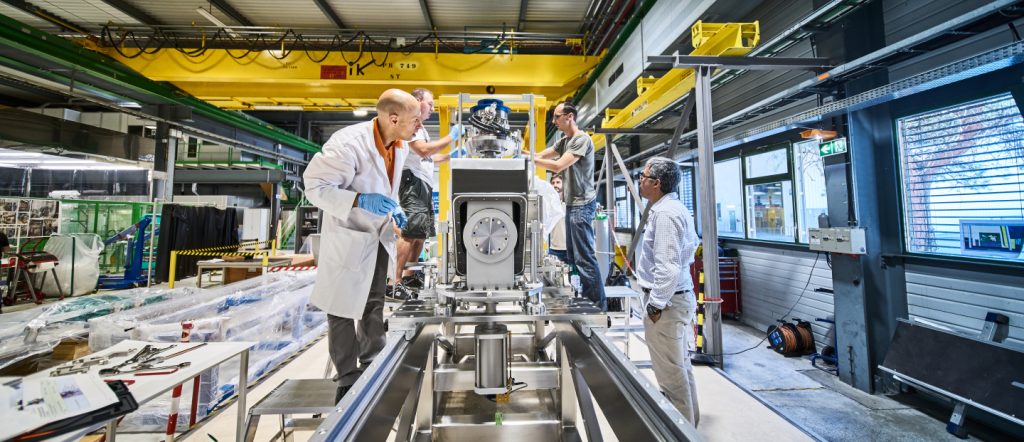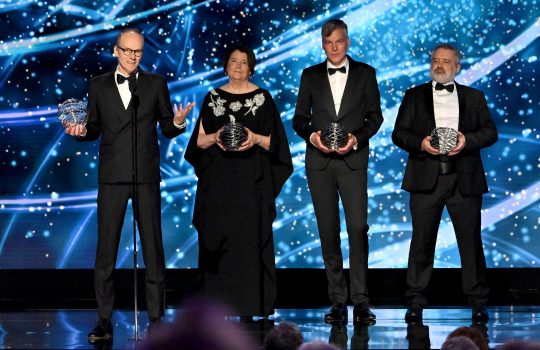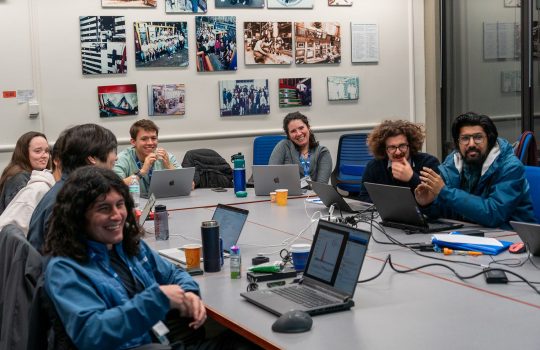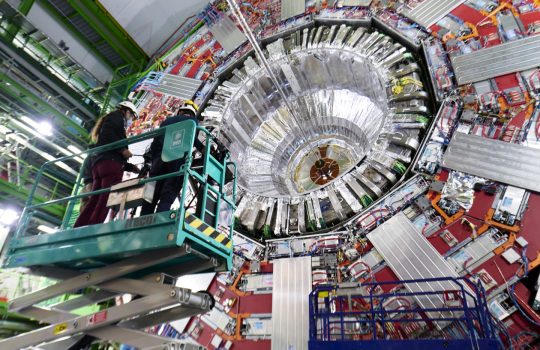The following CERN press release celebrates the groundbreaking of a major upgrade to the Large Hadron Collider, called the High-Luminosity LHC. The HL-LHC will produce five to seven times more collisions than the current LHC, greatly increasing the chances of new discoveries.
Fermilab is leading the U.S. contribution to the HL-LHC, in addition to building new components for the upgraded detector for the CMS experiment. The main innovation contributed by the United States for the HL-LHC is a novel new type of accelerator cavity that uses a breakthrough superconducting technology. Fermilab is also contributing to the design and construction of superconducting magnets that will focus the particle beam much more tightly than the magnets currently in use in the LHC. Fermilab scientists and engineers have also partnered with other CMS collaborators on new designs for tracking modules in the CMS detector, enabling it to respond more quickly to the increased number of collisions in the HL-LHC.
Major work starts to boost the luminosity of the LHC
The Large Hadron Collider (LHC) is officially entering a new stage. Today, a groundbreaking ceremony at CERN celebrates the start of the civil-engineering work for the High-Luminosity LHC (HL-LHC), a new milestone in CERN’s history. By 2026 this major upgrade will have considerably improved the performance of the LHC by increasing the number of collisions in the large experiments and thus boosting the probability of the discovery of new physics phenomena.
The LHC started colliding particles in 2010. Inside the 27-kilometer LHC ring, bunches of protons travel at almost the speed of light and collide at four interaction points. These collisions generate new particles, which are measured by detectors surrounding the interaction points. By analyzing these collisions, physicists from all over the world are deepening our understanding of the laws of nature.
While the LHC is able to produce up to 1 billion proton-proton collisions per second, the HL-LHC will increase this number, referred to by physicists as luminosity, by a factor of between five and seven, allowing about 10 times more data to be accumulated between 2026 and 2036. This means that physicists will be able to investigate rare phenomena and make more accurate measurements. For example, the LHC allowed physicists to unearth the Higgs boson in 2012, thereby making great progress in understanding how particles acquire their mass. The HL-LHC upgrade will allow the Higgs boson’s properties to be defined more accurately and to measure with increased precision how it is produced, how it decays and how it interacts with other particles. In addition, scenarios beyond the Standard Model will be investigated, including supersymmetry, theories about extra dimensions and quark substructure (compositeness).
“The High-Luminosity LHC will extend the LHC’s reach beyond its initial mission, bringing new opportunities for discovery, measuring the properties of particles such as the Higgs boson with greater precision, and exploring the fundamental constituents of the universe ever more profoundly,” said CERN Director-General Fabiola Gianotti.
The HL-LHC project started as an international endeavor involving 29 institutes from 13 countries. It began in November 2011, and two years later was identified as one of the main priorities of the European Strategy for Particle Physics, before the project was formally approved by the CERN Council in June 2016. After successful prototyping, many new hardware elements will be constructed and installed in the years to come. Overall, more than 1.2 kilometers of the current machine will need to be replaced with many new high-technology components such as magnets, collimators and radio-frequency cavities.
“Audacity underpins the history of CERN, and the High-Luminosity LHC writes a new chapter, building a bridge to the future,” said CERN Director for Accelerators and Technology Frédérick Bordry. “It will allow new research, and with its new innovative technologies, it is also a window to the accelerators of the future and to new applications for society.”
To allow all these improvements to be carried out, major civil-engineering work at two main sites is needed, in Switzerland and in France. This includes the construction of new buildings, shafts, caverns and underground galleries. Tunnels and underground halls will house new cryogenic equipment, the electrical power supply systems, and various plants for electricity, cooling and ventilation.
During the civil-engineering work, the LHC will continue to operate, with two long technical stop periods that will allow preparations and installations to be made for high luminosity alongside yearly regular maintenance activities. After completion of this major upgrade, the LHC is expected to produce data in high-luminosity mode from 2026 onward. By pushing the frontiers of accelerator and detector technology, it will also pave the way for future higher-energy accelerators.




